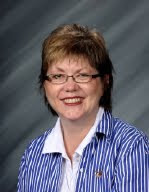
I titled this blog "Beyond Bindings" because it describes the changing status of school library media centers today. It is one of the most exciting evolutions happening in education. The library media center has morphed into a center for acquiring information in myriad forms. Today's library media specialist can now hold the key to a world beyond the walls of the library.
However, before we look further into the current changes, let's go back a bit to a time when a specific technological event brought about the first sea change in school libraries. In 1957 the Soviet Union surprised the world when it launched a little satellite called "Sputnik." Of course, not to be outdone, the United States recognized the challenge, accepted it, and the space race was off and running. First, we needed to prepare our best and brightest for success in orbit. Money was infused into our public schools to update our library collections to educate the future scientists that would take us to the moon and beyond. Check any school library's collection that has not been properly weeded, and you will find a remarkable number of titles from the 1960s.
Outer space is fine, but the 21st-century school library exposes us to a boundless digital world. Online databases provide students with limitless sources for research. With inter-library loan, hard copies, e-books, movies, music, and other resources are available to serve the individual needs of our students.
Perhaps one of the most dynamic changes is the phenomenon known as Library 2.0. Like Web 2.0, Library 2.0 moves us from a passive use of the internet into an interactive environment. Wikis, blogs, podcasts, You Tube, and digital stories are some of the products that result when we use 2.0 technology. Using these 2.0 tools can bring a whole new meaning to authentic learning. Using these tools for their ultimate purpose, requires critical thinking and creativity. Students write with a sense of immediacy for a real audience. Using these tools can help our students move up Bloom's pyramid. Students learn to question, and create new knowledge.
The 21st-century library media center goes way beyond the bindings of books on the library shelves. Today's library media specialist is the guide and facilitator through a vast digital world of limitless possibilities.
Check out this link about Library 2.0
http://library20.ning.com/

Toni,
ReplyDeleteWho would have thought that libraries would eventually become what they have. When I first started in libraries it was because I loved books and liked the order and detail of the library. I liked checking out books to people and having them sign the checkout cards. Filing the cards was fun too. It’s a little scary to me how far we’ve come. Sometimes I question myself and my abilities to keep up with this ever-changing world that we work in. And what happens if I can’t keep up? Will I lose my job? Get a bad evaluation? This begs the question – at what point will librarians need to keep up or get out?
Beth
Beth-
ReplyDeleteOne of my greatest accomplishments while in Napoleon-getting rid of the antiquated card catalogs! They were gone, outta there, no longer needed! Not only were they obsolete, they were completely outdated and cringed each time a student headed for them instead of the available computer catalog (ODIN). So, I reckoned the only way to force usage of the more modern catalog was to toss the old. And it worked! I love teaching students how to search our library through the computer catalog...it is so much faster and you can find so much more!
Another grand accomplishment while there? Weeding out so many of those books from the 1960s! Library 2.0 is exciting to me, and while I don't want to see students move away from books, I do want to encourage the usage of the wide variety of 21st century technology and the webtools that are available out there.